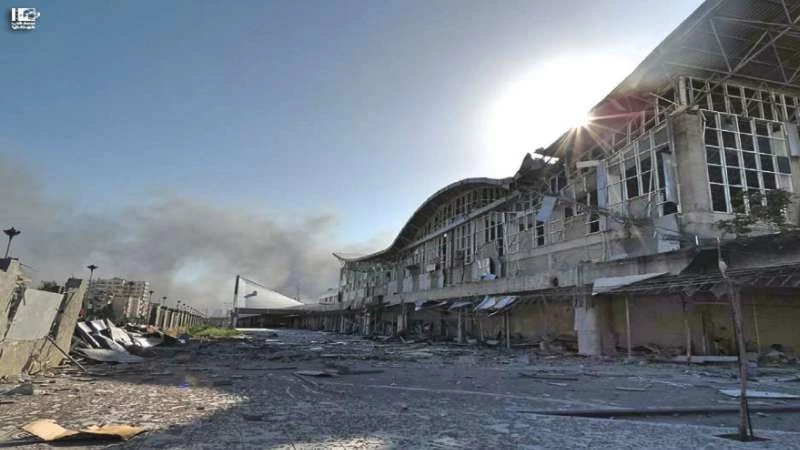Despite the population of al-Wa’er agreeing to the Russian terms, the regime’s bombs continued to fall on the district as of Sunday. Dozens of people have died in al-Wa’er since February. Two weeks ago the district fell victim to the heaviest Assad-regime bombing it had seen since 2011, with the regime using parachute bombs designed to cause maximum destruction. Apparently, the Assad regime’s bombing was in revenge for an attack on 25 February by Hay’at Tahrir al Sham (HTS – a recently formed group made up primarily of fighters who were formerly part of Jabhat al-Nusra) on its Homs intelligence headquarters. However, al-Wa’er had no link to this attack and there has never been any HTS presence there. Under this unprecedented bombardment, coupled with a crippling siege depriving the inhabitants of basic medical equipment, the people of al-Wa’er had little choice but to agree to the regime’s terms. All of this took place while the December 30 ceasefire sponsored by Russia, Iran and Turkey, was still theoretically in effect.
This is not the first ceasefire agreement in al-Wa’er, an outlying district of Homs which is separated from the rest of the city by a short stretch of agricultural land. The rest of Homs fell to the Assad regime in May 2014, and thousands of people from other areas of Homs fled to al-Wa’er. Ever since then, the district has been the scene of an impasse between the regime and its inhabitants. In May 2015, a ceasefire agreement sponsored by the United Nations stipulated that the area would return to regime control. Under the agreement, opposition fighters had to leave the district in stages and the regime would have to release prisoners from the district. However, this agreement was not implemented. In August 2016, the regime launched a new attack on the area, using napalm and phosphorus bombs, and this was followed by another agreement which specified the number of fighters that would have to leave the district. Some fighters and their families indeed left at the time, going to other opposition-held areas north of Homs.
It may seem surprising that negotiations, originally brokered by the United Nations (which is no longer involved) have dragged on for this long between the regime and the besieged inhabitants of al-Wa’er − who have agreed to every ceasefire proposed by the regime and its Russian ally − and that a district with no Jabhat al-Nusra or ISIS presence has been subject to such a ferocious assault during a time of ceasefire. It’s impossible to understand why this is happening without understanding the nature of the regime and its war on the Syrian people. There appears to be a division between the official regime authorities and their militia allies regarding what to do about the district. The regime’s governor of Homs province, Talal al-Barazi, seems to want the district to regime control with its population intact. If the governor had the final say over the matter, al-Wa’er’s situation may have been solved a long time ago. However, power on the ground is held by sectarian militias besieging al-Wa’er over which he has no control. These include militias from the neighboring (mostly Shi’i) village of al-Mazra’a, the regime’s “National Defence” militia, and Iranian-backed foreign militias and they have a very different agenda - the depopulation of the district along sectarian lines and its destruction. It appears now that they will be getting their way, at least partially.
One only needs to look at what happened to the rest of Homs to see what kind of future these militias have in mind for al-Wa’er. A recent report issued by the Syria Institute entitled
The meaningless successive ceasefires in al-Wa’er, the continued besieging and bombardment of the area despite its inhabitants agreeing to every single ceasefire plan presented to them, and the insistence of the regime’s militias on depopulating the district on sectarian lines has exposed the regime’s future plans not only for al-Wa’er and Homs but for the whole of Syria. The new agreement in al-Wa’er is just the latest in a long series of sectarian population transfers carried out by the Assad regime. It is now clear that this regime will not feel secure in Syria without changing the country’s population balance and it is prepared to do anything to achieve this objective.
---------------------------------------
Amr Salahi is a Syrian journalist living in the UK. Salahi previously worked for Al-Hiwar TV, Middle East Monitor, the BBC and ITN.



التعليقات (0)